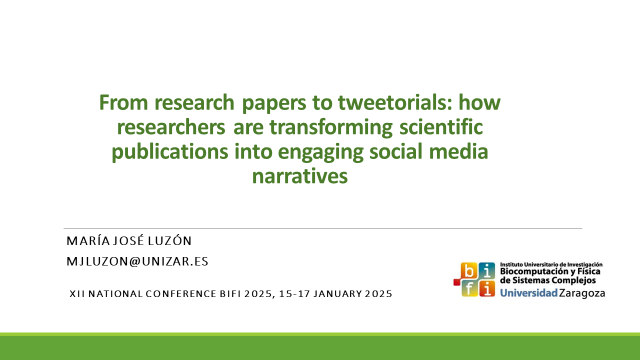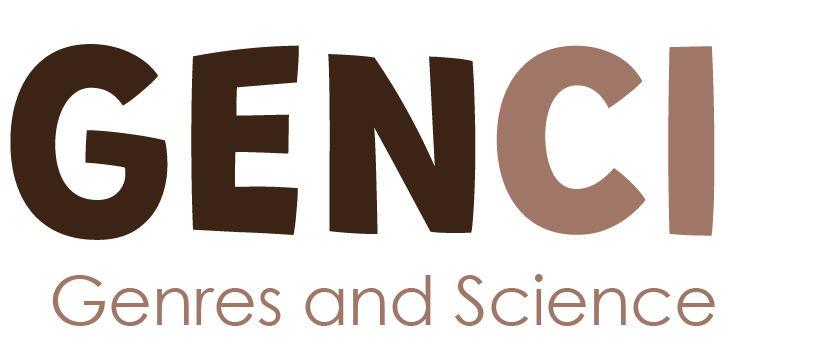Our colleagues María José Luzón and María Ángeles Velilla Sánchez gave two presentations at the XI National Conference BIFI 2025. This is the annual conference of the Institute for Biocomputation and Physics of Complex Systems (BIFI) of the University of Zaragoza, where some GENCI researchers work at the Computing and Data Science area. You can read the abstracts below.

Abstract
The need to promote research and make it visible to diverse audiences has given rise to innovative digital genres designed to draw attention to research publications. Among these, tweetorials—extended Twitter threads that communicate complex concepts— have become increasingly popular among researchers for reporting on and promoting their published articles and preprints. In this study, I analyzed a small-scale corpus of 50 publication-promoting tweetorials to understand how papers/preprints are recontextualized in this genre. The first part of the analysis focuses on the rhetorical structure of tweetorials to determine if they mirror the structure of traditional research articles. The second part examines recontextualizing strategies—techniques used to adapt the content of research papers to the tweetorial format. The analysis has identified five categories of strategies: strategies to establish the authors’ authority and credibility; strategies to make claims and arguments convincing (e.g. the use of figures); strategies to engage the readers and attract their attention to the tweetorials (e.g. questions, gifs); strategies to facilitate quick processing of information; and strategies to deal with space constraints. The findings of this study are expected to help researchers who want to use Twitter to disseminate their research in a clear and engaging way.

Abstract
Online videos are increasingly used by academics, universities and organizations to make scientific knowledge accessible to diverse audiences (Scotto di Carlo, 2014; Erviti & Stengler, 2016; León & Bourk, 2018; Luzón & Pérez-Llantada, 2019). Their multimodal nature provides an effective and accessible format for communicating complex scientific ideas to non-specialist audiences, serving purposes such as disseminating and promoting research findings (Pasquali, 2007). This study examines video abstracts published on the website Latest Thinking (lt.org), designed to engage both the scientific community and lay audiences. A small-scale corpus of 30 videos and their associated research articles from the fields of “Chemistry,” “Medicine” and “Climate Change” has been compiled. The analysis focuses on how authors orchestrate diverse discourse strategies and semiotic modes to assert their voice and establish interpersonal meaning with viewers. Drawing on different proximity facets (Hyland, 2010) such as framing, stance, engagement and visual organization, the study explores how content is made more accessible and interactive. The findings reveal the use of three main strategies: simplifying information to match viewers’ knowledge levels, constructing credibility and authority, and fostering connections with the audience by emphasizing shared relevance.
